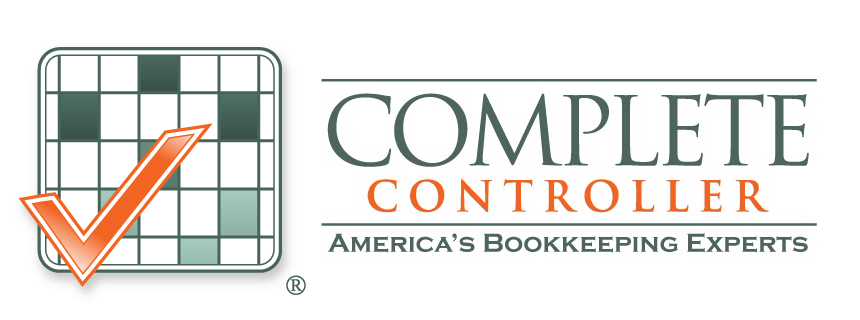Spot Scams: How to Recognize and Avoid Lending Fraud
Avoid lending scams by recognizing critical warning signs like guaranteed approval offers, upfront fee demands, and unsolicited loan contacts that signal fraudsters attempting to steal your money and personal information. Legitimate lenders never promise loans without credit checks, require advance payments before funding, or pressure immediate decisions—understanding these red flags combined with proper verification steps protects you from the $12.5 billion Americans lost to fraud in 2024 alone.
As founder and CEO of Complete Controller, I’ve spent over 20 years guiding businesses through complex financial decisions, witnessing firsthand how lending fraud devastates both personal and business finances. Just last quarter, I helped a manufacturing client recover from a sophisticated business loan scheme that cost them $47,000 and nearly destroyed their credit rating—yet every warning sign was visible from day one. Through this article, you’ll gain the knowledge to spot these red flags, verify legitimate lenders, and protect your financial future using proven strategies I’ve developed while helping hundreds of businesses navigate the lending landscape safely.

What is lending fraud, and how do you avoid it?
- Avoid lending scams by verifying lender credentials, recognizing red flag behaviors, and never paying upfront fees
- Legitimate lenders maintain state licensing, provide transparent terms, and deduct fees from loan proceeds
- Warning signs include unsolicited offers, pressure tactics, wire transfer requests, and too-good-to-be-true rates
- Protect yourself by researching through NMLS database, reading all contracts, and trusting your instincts
- Report suspected fraud immediately to FTC and state authorities to prevent further losses
Understanding the Lending Fraud Landscape: What Scammers Don’t Want You to Know
The lending fraud industry has transformed into a sophisticated operation targeting desperate borrowers through multiple channels and increasingly convincing tactics. Consumer fraud losses jumped 25% in 2024, reaching $12.5 billion total, with the percentage of fraud victims who lost money increasing from 27% to 38% year-over-year according to the Federal Trade Commission.
Modern scammers leverage artificial intelligence to create believable phishing emails and generate deepfake celebrity endorsements for fraudulent investment schemes, making detection more challenging than ever before. Investment scams alone caused $5.7 billion in losses, with 79% of victims losing money at median losses exceeding $9,000 per person.
The psychology behind lending scams
Fraudsters specifically target individuals facing financial stress, knowing that desperation can override normal caution and critical thinking processes. They craft messages that promise immediate relief from mounting bills, poor credit scores, or business cash flow problems.
How AI is changing the scam game
Advanced technology now allows scammers to create convincing fake documents and impersonate legitimate financial institutions with unprecedented accuracy. These tools help fraudsters bypass traditional detection methods that consumers once relied upon for protection.
Red Flags That Scream “Lending Fraud”: Warning Signs Every Borrower Must Know
Recognizing the warning signs of lending scams can save you thousands of dollars and protect your credit rating from devastating damage that takes years to repair. Mortgage scam reports have exploded 407% since 2022, growing from 14 monthly reports to 71 per month by 2025, with victims averaging $16,829 in losses when fraud succeeds.
Guaranteed approval and no credit check claims
Legitimate lenders always review creditworthiness before approving loans, making guaranteed approval promises an immediate red flag for potential lending fraud. Real financial institutions have regulatory obligations to assess borrower ability to repay, which requires examining credit history, income verification, and debt-to-income ratios.
Upfront fee requests and wire transfer demands
Real lenders deduct fees from loan proceeds rather than demanding advance payments through untraceable methods like wire transfers or gift cards. Any request for payment before receiving loan funds violates federal law and indicates fraudulent intent.
Watch for these specific payment red flags:
- Demands for wire transfers to personal accounts
- Requests for gift cards or cryptocurrency payments
- Instructions to send money through apps like Zelle or Venmo
- Requirements to pay “processing fees” before approval
- Claims that upfront payments will improve your approval odds
Pressure tactics and limited-time offers
Scammers create artificial urgency to prevent victims from researching their legitimacy, using phrases like “act now” or “offer expires today” to force quick decisions. Legitimate lenders understand that borrowing decisions require careful consideration and never rush applicants through the process.
The Complete Controller’s Guide to Verifying Legitimate Lenders
Drawing from decades of financial consulting experience, I’ve developed a systematic approach to verifying lender credibility that has protected countless clients from sophisticated fraud schemes. Small business lending fraud increased 13.6% year-over-year in 2023, with only 27% of fraudsters caught during loan origination—down from 32% in 2022.
Using the NMLS consumer access database
The Nationwide Multistate Licensing System provides the most reliable method for confirming lender licensing and regulatory compliance across all states. Every legitimate mortgage lender, loan originator, and many consumer lenders must register with NMLS and display their unique identifier.
Checking physical business locations and contact information
Legitimate lenders maintain verifiable business addresses and professional contact methods that can be independently confirmed through state records. Verify physical locations through Google Street View, check state business registrations, and confirm phone numbers match official listings rather than temporary VOIP services.
Researching better business bureau ratings and customer reviews
Multiple review sources provide insight into lender reputation, but be wary of fake reviews designed to boost scammer credibility. Cross-reference BBB ratings with state attorney general complaints, CFPB databases, and industry-specific review platforms for comprehensive reputation assessment.

Protecting Yourself from Fake Loan Schemes: A Step-by-Step Defense Strategy
Developing a systematic approach to loan shopping provides multiple layers of protection against increasingly sophisticated lending fraud attempts targeting both individuals and businesses. With 64% of lenders expecting fraud to continue growing, proactive defense strategies become essential for financial safety.
The three-lender comparison rule
Always obtain quotes from at least three legitimate lenders to establish baseline terms and identify offers that seem suspiciously favorable or unfavorable. Document each lender’s terms, fees, and requirements in writing to create clear comparison points that reveal outlier offers, potentially indicating fraud.
Documentation verification and contract review
Thoroughly examine all loan documents for inconsistencies, unclear terms, or missing information that could indicate fraudulent lending practices. Pay special attention to:
- Company names matching across all documents
- Physical addresses aligning with verified locations
- Phone numbers connecting to actual business lines
- Email addresses using professional domains
- Clear identification of all fees and charges
- Specific repayment terms and schedules
Safe communication and information sharing protocols
Never share sensitive financial information through unsecured channels or with lenders who contacted you first, rather than responding to your inquiry. Establish communication through official channels only, using encrypted portals for document submission and avoiding text message or social media interactions about loan details.
Case Study Analysis: Real Victims, Real Lessons from Recent Lending Fraud Cases
The Federal Trade Commission’s 2025 action against Accelerated Debt Settlement reveals how sophisticated lending fraud operations target vulnerable populations, including seniors and veterans. This $100 million scheme used multiple deceptive tactics, including impersonating banks, credit bureaus, and government agencies, to collect illegal advance fees while promising impossible debt reductions.
Key tactics used by the accelerated debt scammers
The operation combined telemarketing with direct mail and online advertising to reach potential victims, then used high-pressure sales tactics and false impersonation to extract advance fees. Scammers posed as representatives from major banks, the Social Security Administration, and credit bureaus to build false credibility.
Financial impact on victims
One Army veteran lost $13,000 and watched his credit score plummet from the high 700s to the 500s, nearly losing his security clearance and employment. Another disabled veteran was forced to drain his savings and retirement funds after paying nearly $10,000 in advance fees for debt relief services that never materialized.
Regulatory response and consumer protections
The FTC’s swift action resulted in asset recovery for over 7,000 victims, demonstrating the importance of reporting suspected fraud to federal authorities. This case highlights how regulatory agencies can intervene when consumers report suspicious activity promptly.
Building Long-Term Safe Lending Practices for Individuals and Businesses
Establishing systematic lending practices provides ongoing protection against evolving fraud tactics while ensuring access to legitimate financing when needed. Throughout my career helping businesses secure proper financing, I’ve seen how preparation and knowledge serve as the best defense against sophisticated scams.
Creating a personal lending safety checklist should include:
- Pre-approved lender lists from trusted sources
- Standardized verification procedures for new lenders
- Red flag identification protocols
- Documentation requirements before sharing information
- Cooling-off periods for major financial decisions
Professional financial guidance can provide an objective evaluation of lending opportunities and help identify potentially fraudulent offers that emotional decision-making might miss. At Complete Controller, we’ve developed comprehensive verification frameworks that have saved clients millions in potential fraud losses over the years.
Final Thoughts
Avoiding lending scams requires vigilance, systematic verification, and understanding that legitimate lending follows predictable patterns that scammers cannot replicate. Throughout my two decades as CEO of Complete Controller, I’ve learned that the best defense against lending fraud combines education with healthy skepticism and professional support.
The data speaks volumes—with fraud losses reaching $12.5 billion in 2024 and mortgage scam reports growing 407% since 2022, protecting yourself has never been more critical. Real lenders are licensed, transparent about terms, and never demand upfront payments or guarantee approval without a proper credit review.
When doubt creeps in, take time to research and verify rather than rushing into decisions you might regret. Your financial future depends on making informed choices backed by proper due diligence. For expert guidance on business financial management and comprehensive fraud protection strategies, contact the experienced team at Complete Controller today.

Frequently Asked Questions About Avoiding Lending Scams
How can I verify if a loan company is legitimate before applying?
Check the lender’s license through the NMLS Consumer Access database, verify their physical business address, research Better Business Bureau ratings, and confirm they have proper state licensing through your state’s banking regulator website.
What should I do if I have already sent money to a suspected scam lender?
Contact your bank immediately to report the fraudulent transaction and request a reversal, file a complaint with the Federal Trade Commission at ReportFraud.ftc.gov, notify your state attorney general’s office, and freeze your credit reports to prevent identity theft.
Are all online lenders potential scams I should avoid?
Many legitimate lenders operate primarily online, but digital platforms require extra verification, including checking NMLS registration, reading multiple customer reviews across different platforms, and confirming the lender has been in business for several years with consistent contact information.
Do legitimate lenders ever ask for upfront fees before giving me a loan?
Some legitimate lenders charge origination or application fees, but these are always deducted from your loan proceeds at closing, never required as advance cash payments, wire transfers, or gift cards before loan approval or funding.
What’s the difference between predatory lending and outright lending fraud?
Predatory lending involves legal but unfair loan terms like excessive interest rates or hidden fees that trap borrowers in debt cycles, while lending fraud involves criminal deception where scammers steal money with no intention of providing any actual loan services.
Sources
- RBC Royal Bank. (March 4, 2025). “Top Scams of 2025: What to Watch For.” My Money Matters.
- Inscribe AI. (June 19, 2025). “12 Common Red Flags for Loan Application Fraud.” Inscribe Blog.
- Los Angeles County Department of Consumer and Business Affairs. (July 6, 2019). “Avoiding Predatory Lending and Getting a Good Loan.”
- Mississippi Department of Banking and Consumer Finance. (March 12, 2009). “Consumers Beware of Fraudulent Advance-Fee Loans.”
- Federal Trade Commission. (July 21, 2025). “FTC Halts Illegal Debt-Relief Operation that Falsely Impersonated Businesses and Government.” FTC News.
- Union Square. (2025). “How to Spot and Avoid Loan Scams Online.” Fraud Prevention Center.
- Nav. (April 15, 2025). “Check To See if Your Loan Company Is Legit.” Nav Blog.
- Credit Ninja. (May 21, 2025). “How to Check if a Loan Company is Legitimate.”
- Federal Trade Commission. (March 10, 2025). “New FTC Data Show a Big Jump in Reported Losses to Fraud – $12.5 Billion in 2024.” FTC News Release.
- BackOffice Pro. (May 9, 2025). “Mortgage Scam Statistics 2025.” BackOffice Pro Blog.
- LexisNexis Risk Solutions. (August 6, 2025). “2024 Small Business Lending Fraud Study.”
- Center for Responsible Lending. (February 6, 2025). “Down the Drain: Payday Lenders Take $2.4 Billion in Fees from Borrowers in One Year.”
- Federal Trade Commission. (July 21, 2025). “FTC Halts Illegal Debt-Relief Operation that Falsely Impersonated Businesses and Government, Harming Consumers.” FTC Press Release.
- NMLS Consumer Access. www.nmlsconsumeraccess.org
- Federal Trade Commission. www.ftc.gov
- Wikipedia. “Mortgage Fraud.” en.wikipedia.org/wiki/Mortgage_fraud
 About Complete Controller® – America’s Bookkeeping Experts Complete Controller is the Nation’s Leader in virtual bookkeeping, providing service to businesses and households alike. Utilizing Complete Controller’s technology, clients gain access to a cloud platform where their QuickBooks™️ file, critical financial documents, and back-office tools are hosted in an efficient SSO environment. Complete Controller’s team of certified US-based accounting professionals provide bookkeeping, record storage, performance reporting, and controller services including training, cash-flow management, budgeting and forecasting, process and controls advisement, and bill-pay. With flat-rate service plans, Complete Controller is the most cost-effective expert accounting solution for business, family-office, trusts, and households of any size or complexity.
About Complete Controller® – America’s Bookkeeping Experts Complete Controller is the Nation’s Leader in virtual bookkeeping, providing service to businesses and households alike. Utilizing Complete Controller’s technology, clients gain access to a cloud platform where their QuickBooks™️ file, critical financial documents, and back-office tools are hosted in an efficient SSO environment. Complete Controller’s team of certified US-based accounting professionals provide bookkeeping, record storage, performance reporting, and controller services including training, cash-flow management, budgeting and forecasting, process and controls advisement, and bill-pay. With flat-rate service plans, Complete Controller is the most cost-effective expert accounting solution for business, family-office, trusts, and households of any size or complexity.
 Reviewed By:
Reviewed By:




